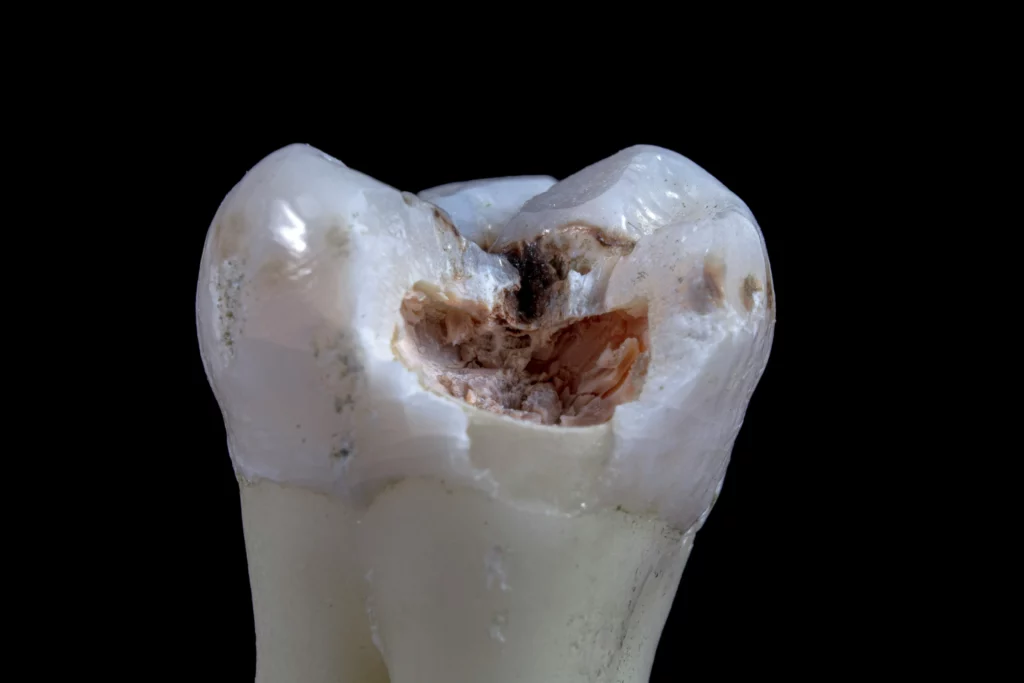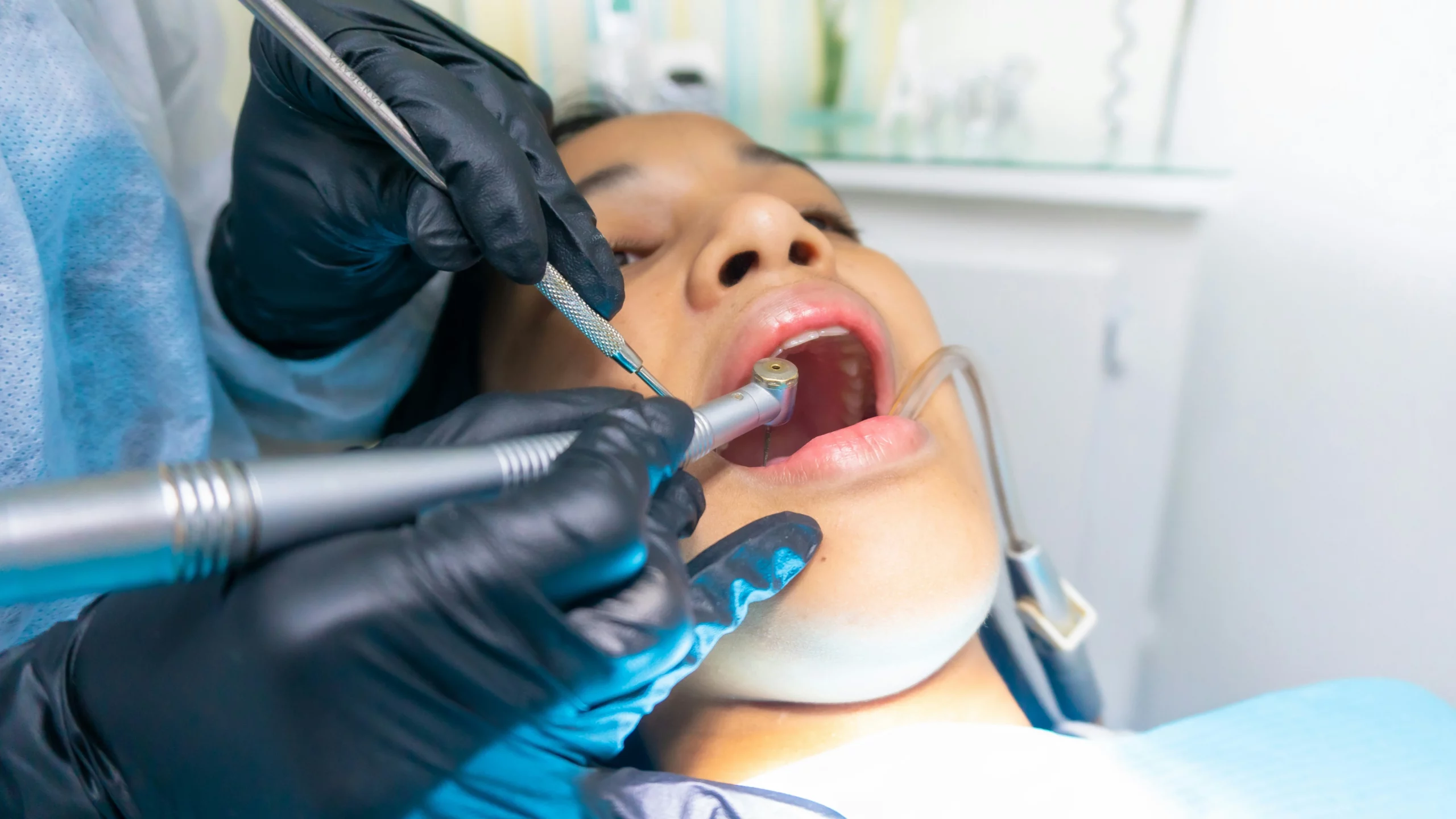What Is A Tooth Abscess?
A tooth abscess is an uncomfortable dental ailment where a bacterial infection prompts the accumulation of pus within the tooth or surrounding tissues. This infection often arises from untreated tooth decay, tooth trauma, or gum disease.
If you suspect a tooth abscess, it is imperative to seek swift dental attention. Early intervention not only helps prevent complications but also preserves overall oral health. Regular dental check-ups and maintaining excellent oral hygiene are paramount in averting dental issues that may contribute to the formation of abscesses. For quality dental care and treatment, visit Clean Smiles Dental Hygiene Clinic. Our experienced professionals are dedicated to ensuring oral health and providing the necessary interventions to address dental concerns. Don’t hesitate to schedule an appointment and take the first step towards a healthier, happier smile. Your well-being is our priority at Clean Smiles Dental Hygiene Clinic.
The 3 Types of Tooth Abscess
There are three primary types of tooth abscess: periapical, periodontal, and gingival. Understanding these types is crucial in identifying and treating the condition effectively.
Periapical Abscess
A periapical tooth abscess is a pus collection at the tip of a tooth’s root due to a bacterial infection. An untreated cavity, dental trauma, or advanced gum disease causes it. As the infection progresses, it leads to inflammation and pus formation, causing severe toothache, swelling, sensitivity to temperature, and sometimes a pimple-like bump on the gums, known as a dental fistula.
Periodontal Tooth Abscess
A periodontal tooth abscess is a bacterial infection that leads to the formation of pus within the gum tissues or periodontal pockets. It is usually caused by advanced gum disease. Symptoms include localized swelling, pain, pus discharge, tooth sensitivity, fever, and malaise.
Gingival Abscess
A gingival abscess is a localized collection of pus within the gum tissues caused by bacterial infection. Gum infections, tooth infections, and trauma are common causes. Symptoms include swelling, pain or tenderness, pus discharge, bad taste, and fever in severe cases.
What Are The Tooth Abscess Stages?
Tooth abscess stages progress through various phases, each with distinct characteristics that signify the severity of the infection.
Enamel Decay
Enamel decay is the initial stage in the progression of a tooth abscess and plays a crucial role in the overall development of the condition. Enamel, the outermost layer of the tooth, is primarily composed of minerals like calcium and phosphate that give it its strength and protective qualities.
When enamel decay occurs, it is often due to poor oral hygiene practices, consumption of sugary or acidic foods and drinks, or underlying dental issues such as cavities. As enamel deteriorates, it becomes susceptible to bacterial infiltration, leading to further decay and potential infection.
The process of enamel decay typically begins with the demineralization of the tooth surface caused by acid-producing bacteria feeding on sugars from food debris left in the mouth. This initial weakening of the enamel can manifest as white spots or discoloration on the tooth surface, indicating early signs of decay.
Without proper intervention through improved oral hygiene habits and regular dental check-ups, enamel decay can progress further into deeper layers of the tooth structure, ultimately contributing to the formation of cavities and increasing the risk of developing a tooth abscess. Understanding and addressing enamel decay in its early stages are essential for preventing more serious dental complications down the line.

Dentin Decay
Dentin decay occurs when plaque and food particles bacteria penetrate the enamel and reach the tooth’s dentin layer. The dentin is less hard or protective than enamel, making it more vulnerable to decay once exposed.
As the bacteria continue to feed on sugars in the mouth, they produce acid that erodes the dentin, causing cavities to form. The decay in the dentin can progress rapidly, especially if proper oral hygiene is not maintained.
Sensitivity to hot or cold temperatures may be one of the first signs of dentin decay, as the nerves within the tooth become exposed due to erosion of this layer. If left untreated, dentin decay can lead to further complications such as pulp infection and abscess formation.
The progression of decay through the dentin can weaken the tooth’s structure, making it more susceptible to fractures or breakage. In advanced stages of dentin decay, individuals may experience sharp pain when biting down on food or applying pressure on the affected tooth.
This pain indicates that the decay has reached a critical point and requires immediate attention from a dental professional. Regular dental check-ups are crucial for early detection and treatment of dentin decay before it progresses to more severe stages that threaten overall dental health.
Tooth Pulp Infection
Tooth pulp infection is a critical stage in the progression of a tooth abscess. The pulp, located at the center of the tooth, is a soft tissue that contains nerves, blood vessels, and connective tissues. When bacteria penetrate the outer layers of the tooth due to untreated cavities or dental trauma, they can reach and infect the tooth pulp.
This infection can cause severe pain and discomfort for the individual affected. As the bacteria multiply within the pulp chamber, inflammation occurs, leading to increased pressure within the tooth structure.
The symptoms of tooth pulp infection are often intense and may include sharp or throbbing pain in response to hot or cold stimuli, tenderness when biting down on food, swelling around the affected tooth, and even pus drainage if an abscess has formed. The infection can also lead to heightened sensitivity to pressure within the affected tooth due to the inflammatory response triggered by the presence of harmful bacteria.
If left untreated, a tooth pulp infection can progress further into more serious complications such as abscess formation and potentially even systemic spread of infection throughout the body. It is crucial for individuals experiencing symptoms indicative of a tooth pulp infection to seek prompt dental treatment to address the underlying cause and prevent further damage to their oral health.
Abscess Formation
Abscess formation is a crucial stage in the progression of a tooth abscess, marking the culmination of the infection within the tooth. As the bacteria from decay or injury reach the innermost layer of the tooth, known as the pulp, they trigger a localized inflammatory response.
This response leads to an accumulation of pus—a mixture of dead white blood cells, tissue debris, and bacteria—within a confined space at the tip of the tooth’s root. The pressure from this buildup can cause intense pain and discomfort for the individual affected by the abscess.
The formation of an abscess signifies that the body’s immune system is actively fighting off the invading bacteria. However, if left untreated, this pocket of infection can continue to grow and spread to surrounding tissues, leading to more severe complications.
In some cases, the abscess may rupture on its own, releasing pus into the oral cavity and providing temporary relief from pain. Nevertheless, professional dental intervention is necessary to fully address and treat an abscess to prevent further oral health issues and systemic infections.
Tooth Loss
Tooth loss is a serious consequence that can result from the progression of a tooth abscess if left untreated. As the infection advances through the different stages, it can lead to extensive damage to the tooth structure and surrounding tissues, ultimately compromising the tooth’s viability. Enamel decay, when left unchecked, can progress to dentin decay and reach the inner pulp of the tooth, where vital nerves and blood vessels are housed.
This stage of infection can cause severe pain and inflammation, leading to further deterioration of the tooth structure. Once an abscess forms within or around the tooth’s root, it creates a pocket of pus that exerts pressure on surrounding tissues and bone.
This pressure can cause immense discomfort and may result in loosening of the affected tooth. If left untreated, the infection can spread to adjacent teeth or even into the jawbone, leading to widespread dental issues. In severe cases where extensive damage has occurred, and treatment options are limited, extraction of the affected tooth may be necessary to prevent further complications and alleviate pain. Tooth loss due to a neglected abscess underscores the importance of emergency dental care and regular dental care in maintaining oral health and preventing irreversible damage.
How Fast Do Tooth Abscess Stages Progress?
Tooth abscess stages can progress at varying rates depending on various factors, such as the individual’s oral health, immune system response, and the severity of the infection. In general, the progression of a tooth abscess follows a gradual trajectory from initial enamel decay to advanced stages of abscess formation. Enamel decay typically occurs over a period of months to years as bacteria gradually erode the hard outer layer of the tooth due to poor oral hygiene practices or untreated cavities.
This initial stage may not always cause noticeable symptoms, making it crucial for individuals to maintain regular dental check-ups to catch any signs of decay early on. As enamel decay progresses and reaches the dentin layer of the tooth, the pace at which the infection spreads can accelerate.
Dentin decay can lead to increased sensitivity to hot and cold temperatures, as well as sharp pain when consuming sugary foods or beverages. If left untreated, the infection may penetrate deeper into the tooth pulp, causing intense throbbing pain and potential swelling in the surrounding gum tissue.
The speed at which an abscess forms can vary from weeks to months depending on how quickly bacteria proliferate and how effectively the body’s immune response is able to contain the infection. Ultimately, timely intervention by a dental professional is essential in halting the progression of tooth abscess stages and preventing further complications.
Signs A Tooth Abscess Is Spreading


A tooth abscess is a serious dental condition that can lead to potentially life-threatening complications if left untreated. One of the key indicators that a tooth abscess is spreading is the presence of persistent and worsening pain.
Initially, a tooth abscess may cause localized pain around the affected tooth or in the surrounding gums. However, as the infection spreads to neighboring tissues and structures, the pain can intensify and radiate to other areas of the mouth, face, or even neck.
This spreading pain is often described as throbbing, sharp, or constant and may be accompanied by swelling and redness in the affected area. Another sign that a tooth abscess is spreading is the development of swelling in the face or neck.
As the infection progresses, it can cause inflammation and fluid buildup in the tissues around the abscessed tooth. This can result in visible swelling that may be tender to touch.
In some cases, the swelling can become significant enough to distort facial features or restrict movement in certain areas. Swelling associated with a spreading tooth abscess should not be ignored, as it indicates an escalation of the infection beyond its initial site and highlights the urgent need for professional intervention.
Conclusion: Tooth Abscess Stages
In conclusion, understanding the stages and implications of a tooth abscess is crucial for maintaining oral health and preventing serious complications. Whether it’s enamel decay, dentin decay, or the formation of an abscess, timely intervention is essential to halt the progression of the infection and preserve the integrity of the affected tooth and surrounding tissues.
If you suspect a tooth abscess or are experiencing symptoms such as persistent toothache, swelling, or sensitivity, it’s imperative to seek prompt dental attention. Early intervention not only alleviates discomfort but also mitigates the risk of complications and potential tooth loss.
For comprehensive dental care and treatment, we encourage you to visit Clean Smiles Dental Hygiene Clinic. Our experienced professionals are dedicated to providing quality dental care and addressing your dental concerns with compassion and expertise. Don’t delay in scheduling an appointment to take the first step towards restoring your oral health and achieving a brighter, healthier smile. Your well-being is our priority at Clean Smiles Dental Hygiene Clinic.



